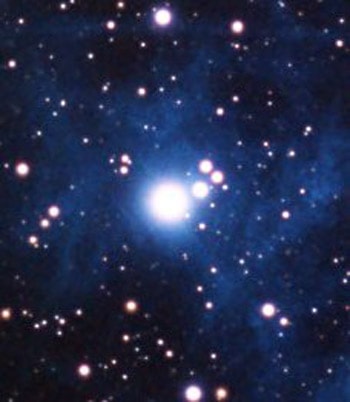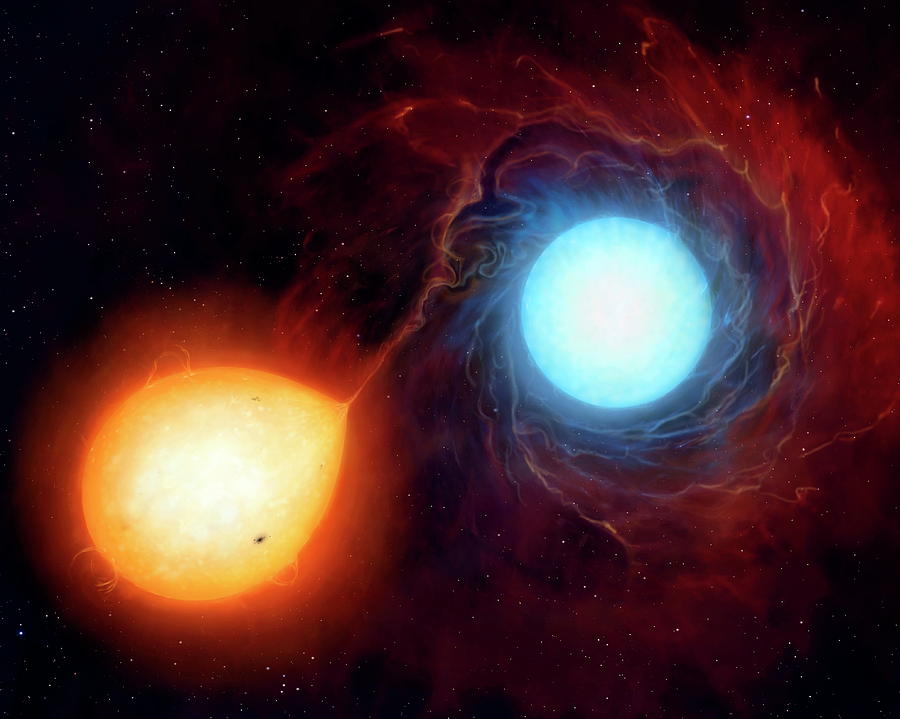JohnD wrote: ↑Fri Feb 25, 2022 9:07 am
Thanks to all for the points discussed above. We are often told that space is so big (Its further to the next star than the post office down the road!) so that even when galaxies collide, stars would not. But surely in that vastness, and enormous numbers of stars, a few must at least come close. Was this an example?
Yes, maybe Albireo is an example, although the stars don't seem to have come close enough to really affect one another.
But there is a word for stars that come so close that they interact, and that is blue straggler. They are typically found in the crowded centers of globular clusters, and they stand out because they are relatively massive and remain on the main sequence (that is, they fuse hydrogen to helium in their cores), while almost all other stars of the same mass in a globular cluster have run out of hydrogen in their cores and turned into giants.
Take a look at the color magnitude diagram of globular cluster M55 above. M55 is an old cluster, probably 12 billion years old, and only light-weight stars remain on the main sequence. (Stars on the main sequence fuse hydrogen to helium in their cores.)
Stars continually use up hydrogen and convert it to helium during their main sequence lifetimes. When they have used up the hydrogen in their cores, so that they can no longer sustain themselves by core hydrogen fusion, they become giants and sustain themselves by other means (until they have used up absolutely all fuel available to them, after which they become white dwarfs (or in rare cases neutron stars, or in extreme cases black holes).
Take a look at the diagram again. You can see the red giant branch and the horizontal giant branch. (There is also an asymtotic giant branch, the AGB branch, which is parallel to the red giant branch, but we don't have to worry about that here.) The stars on the red giant branch, the horizontal giant branch and the AGB branch are giants that have used up the hydrogen in their cores.
Yes, but now take a look at the blue straggler "branch". (It is not well-populated, so it is not called a branch.) The stars here are "too massive" and "too blue", and they fuse hydrogen to helium in their cores. Why do the blue stragglers still have hydrogen in their cores, while almost all other stars of the same mass in the globular cluster have not?
This may be how a blue straggler forms. The image shows binary star Algol. The two components were probably always very close together. As the more massive component turned into a red giant, its outer layers became very tenuous and distended. Those outer layers were caught by the gravitational field of the other component, which was still a main sequence star and much more compact. The main sequence star started siphoning off gas from its swollen companion, and that process still goes on. In this way, the now-blue component gained extra mass, while the red component lost mass.
In short, a blue straggler is a star that has received another helping of hydrogen so that it gets more massive and brighter and bluer and can keep on fusing hydrogen to helium in its core while other stars of the same mass have depleted the hydrogen in their cores, and the blue straggler has received that hydrogen from another star!
And other stars can pass sufficiently close to our solar system to cause some disturbances, even if the stars themselves are nowhere near enough to interact in any way:
Astronomy Magazine wrote:
Every 50,000 years or so, a nomadic star passes near our solar system. Most brush by without incident. But, every once in a while, one comes so close that it gains a prominent place in Earth’s night sky, as well as knocks distant comets loose from their orbits.
The most famous of these stellar interlopers is called Scholz’s Star. This small binary star system was discovered in 2013. Its orbital path indicated that, about 70,000 years ago, it passed through the Oort Cloud, the extended sphere of icy bodies that surrounds the fringes of our solar system. Some astronomers even think Scholz’s Star could have sent some of these objects tumbling into the inner solar system when it passed.
So things happen in space!

Ann
 Beautiful Albireo AB
Beautiful Albireo AB



